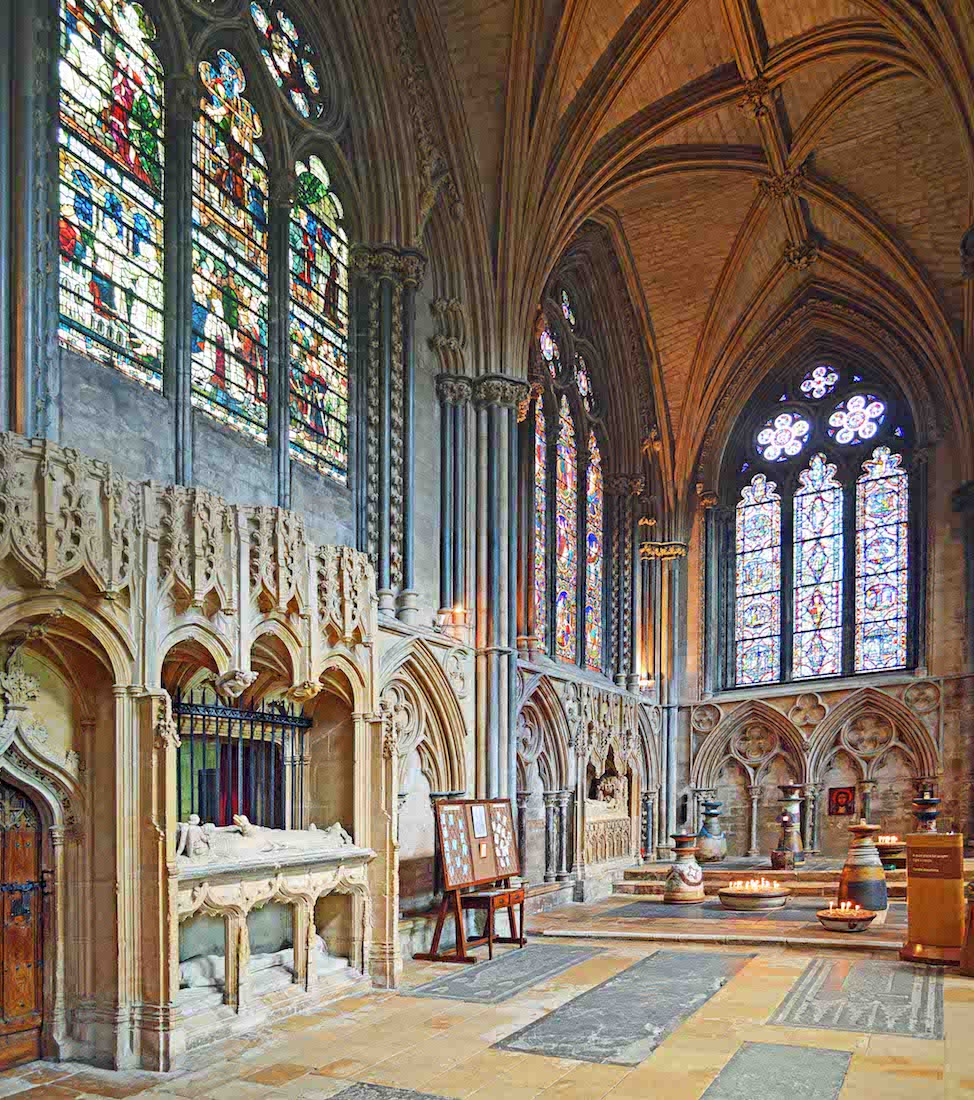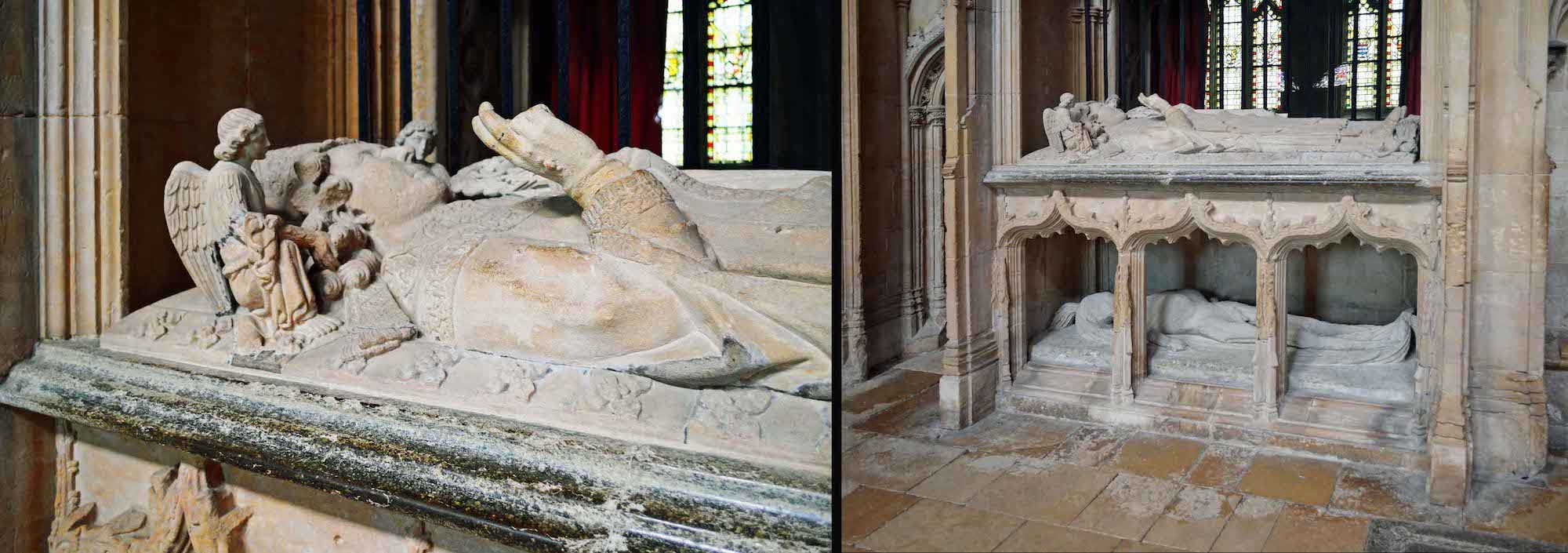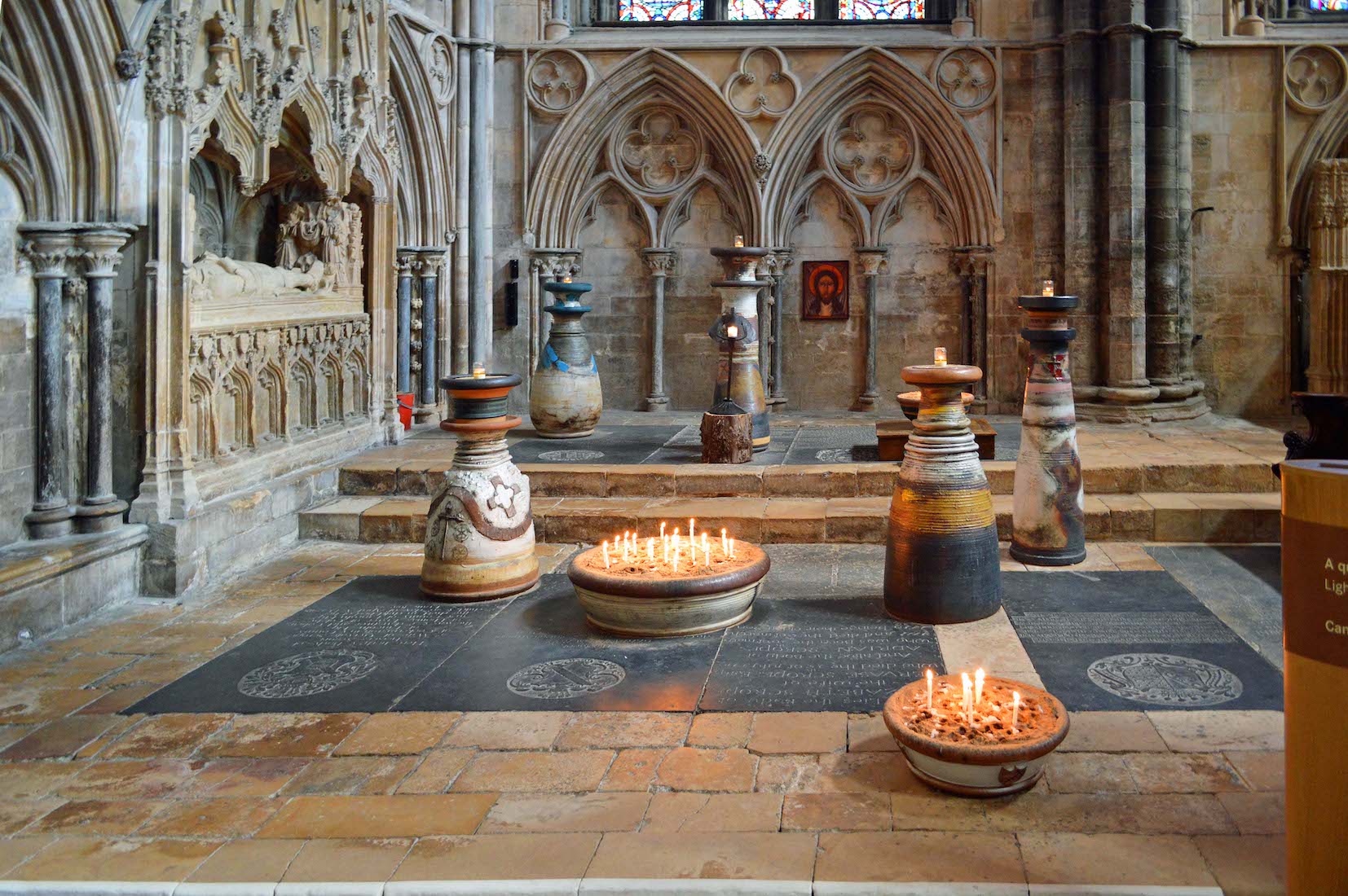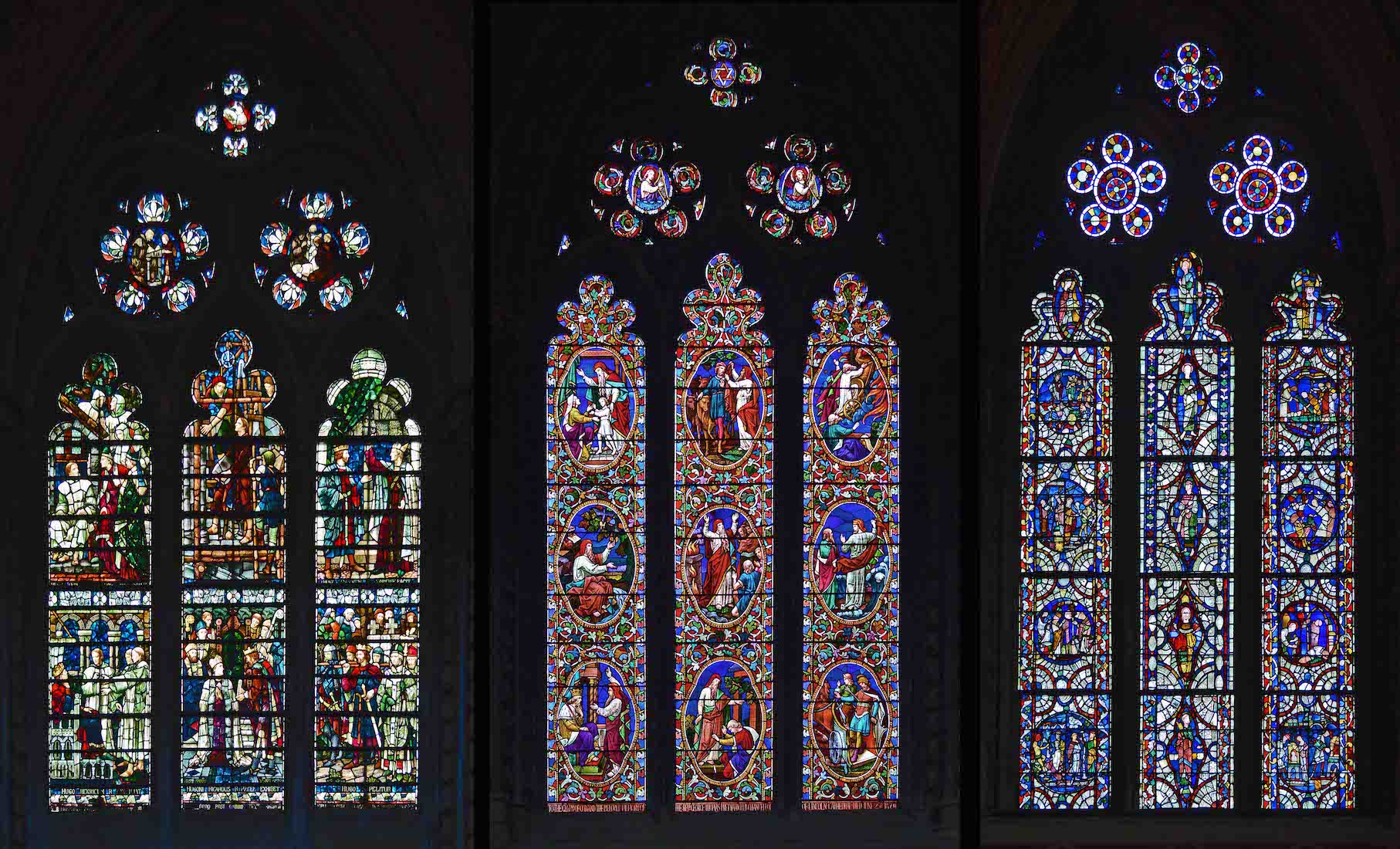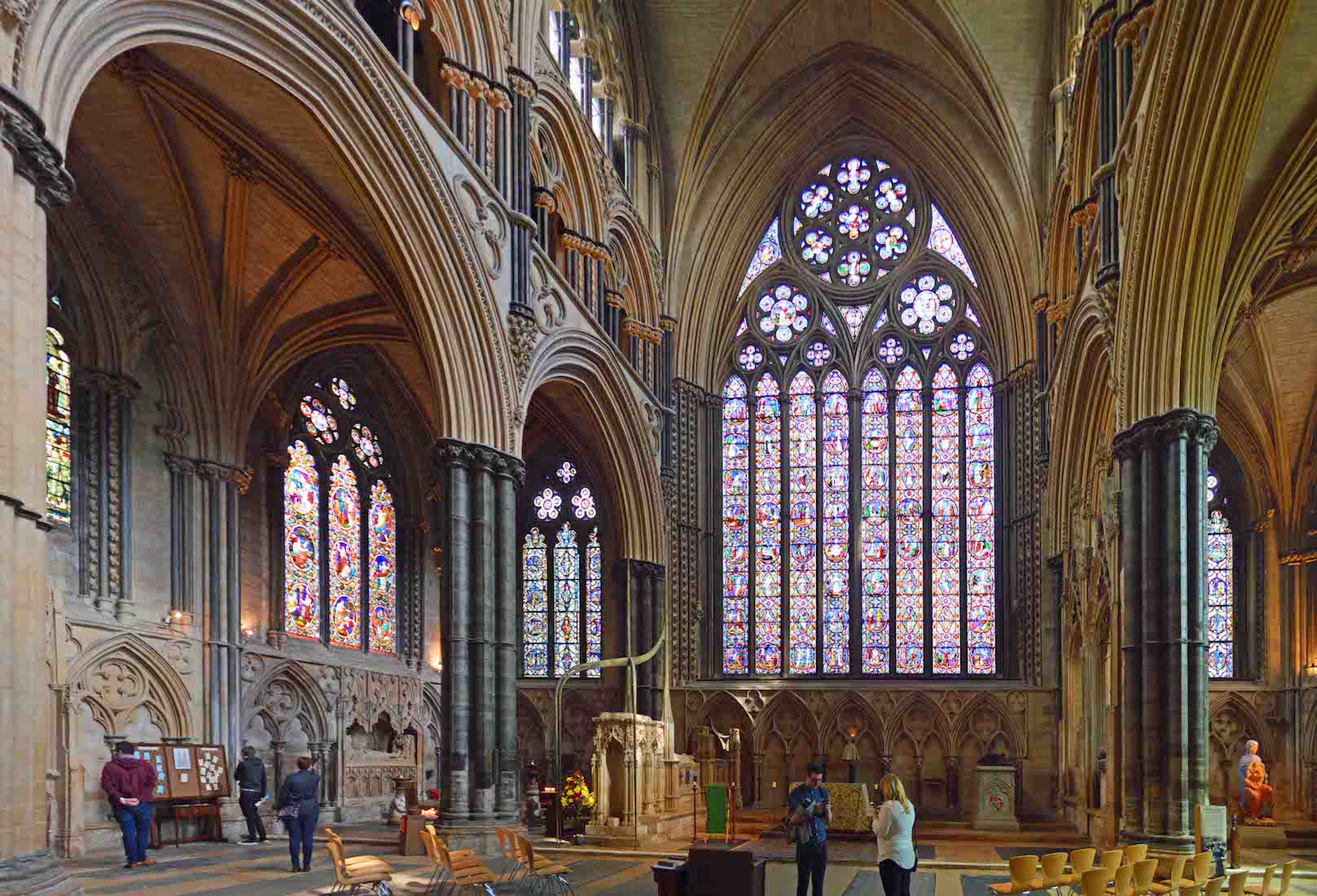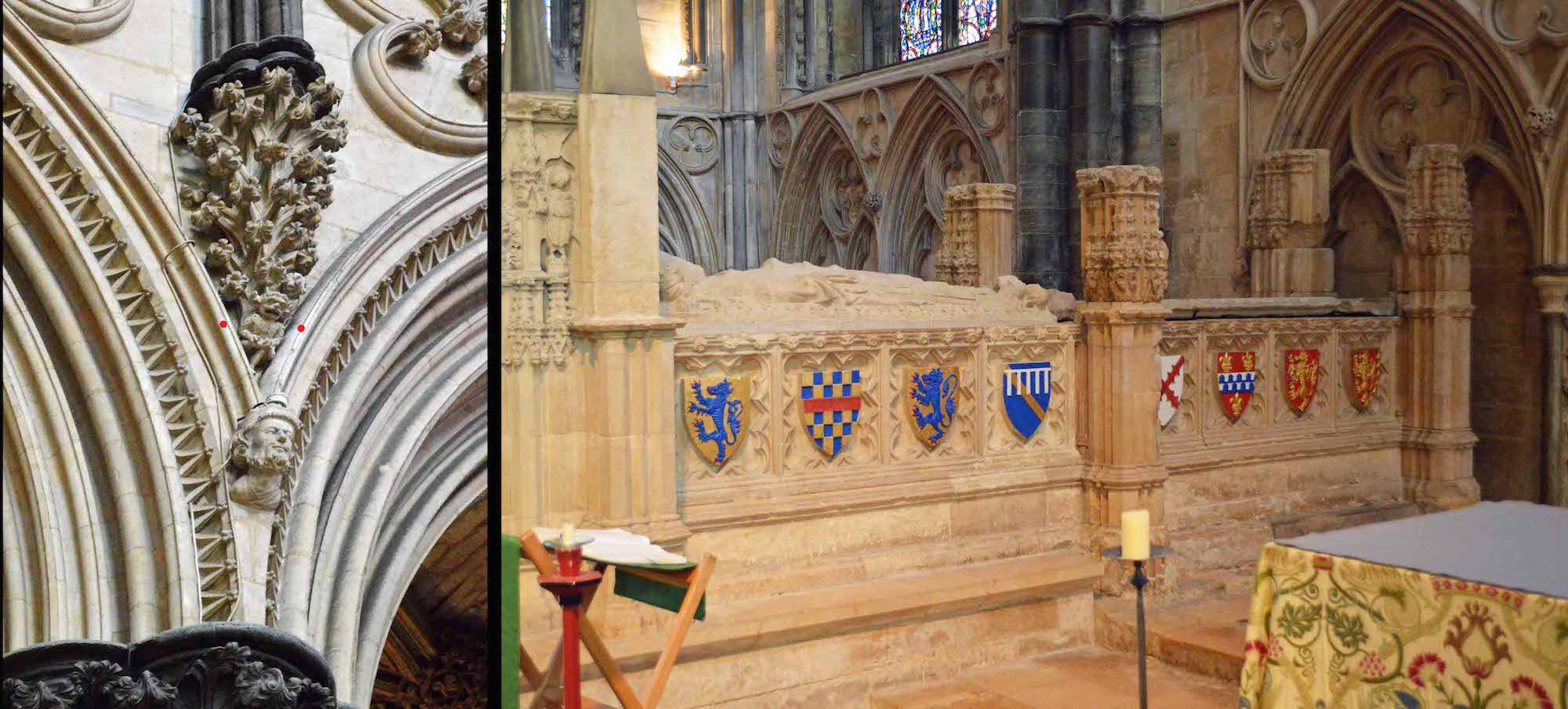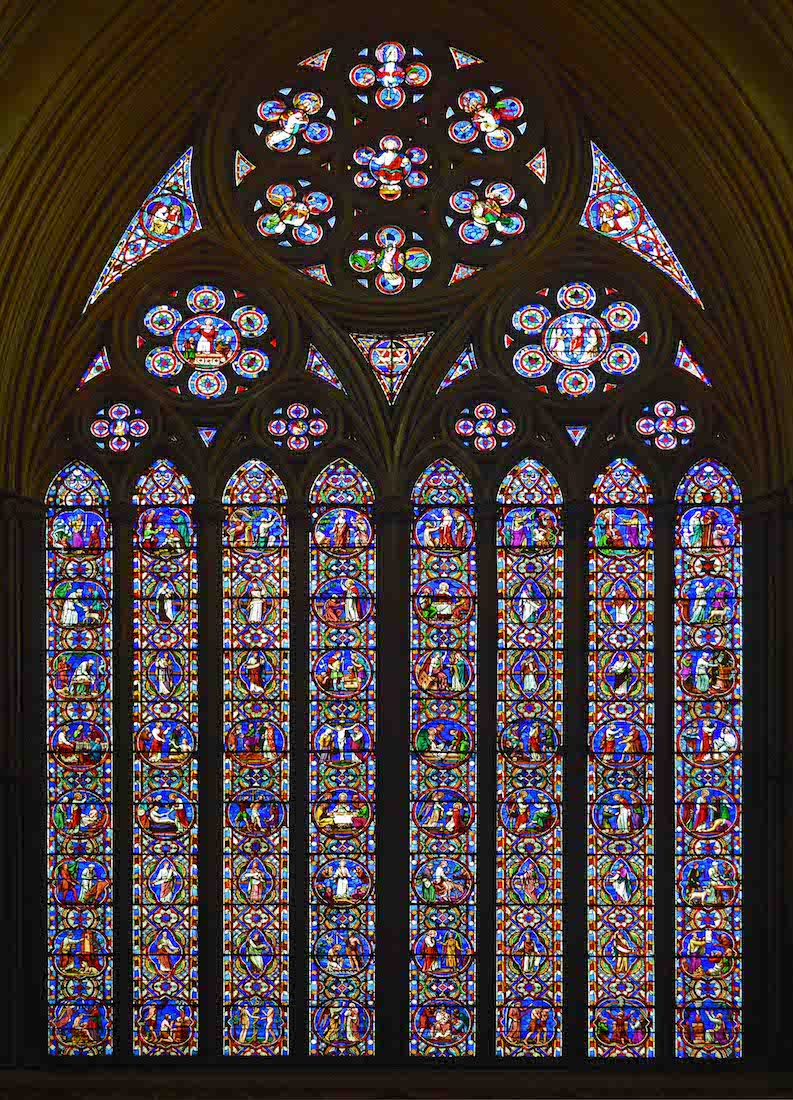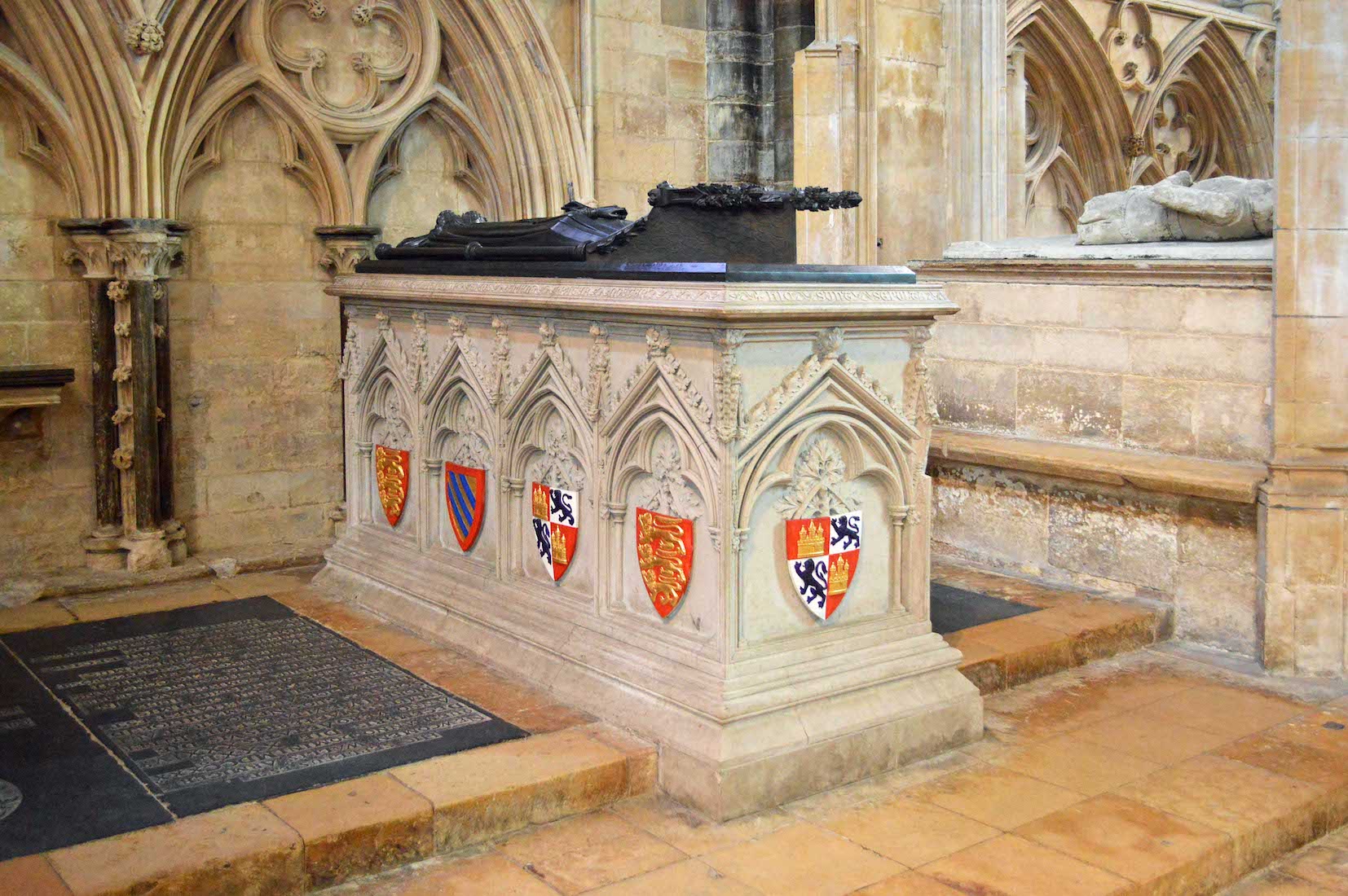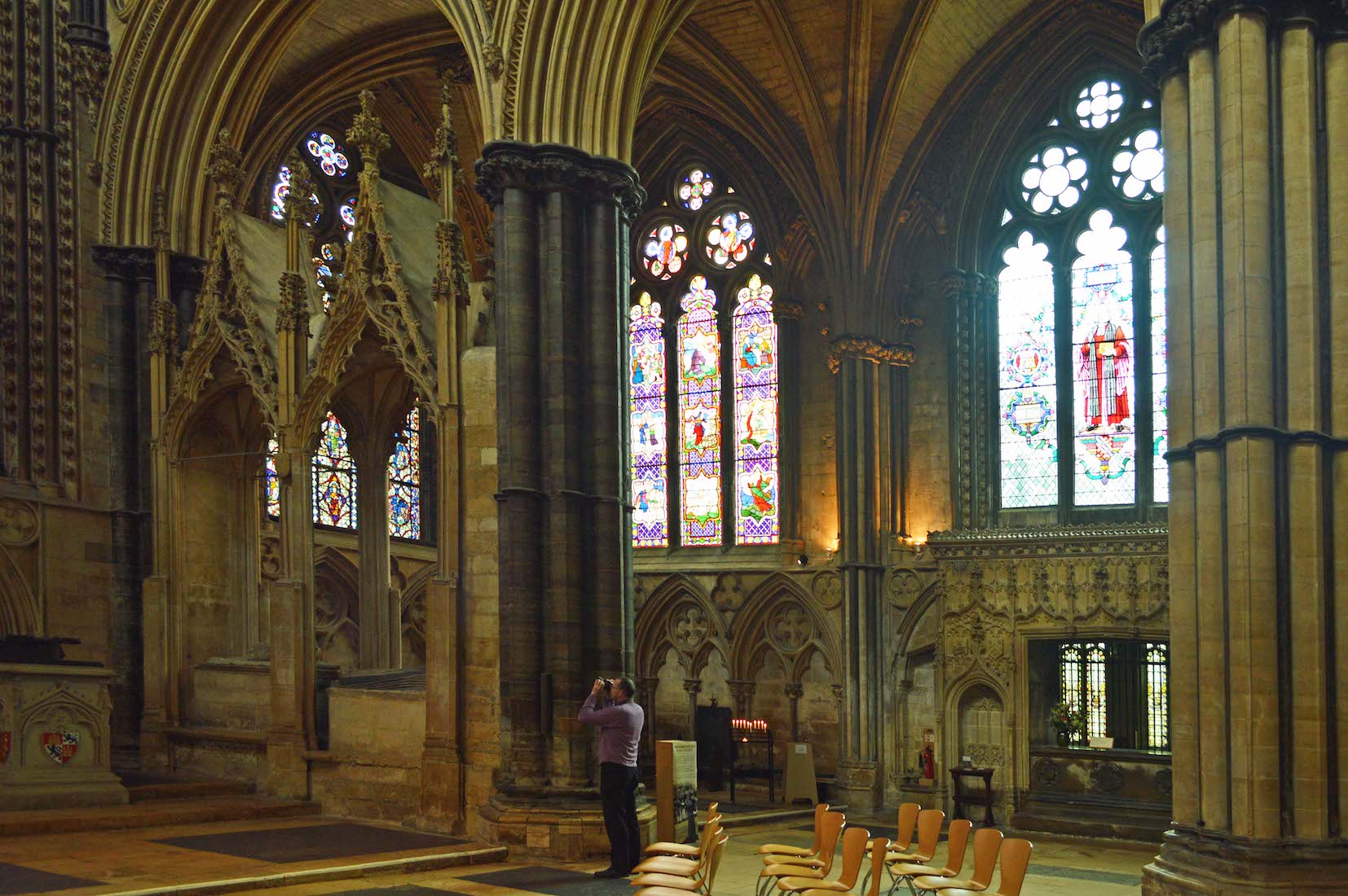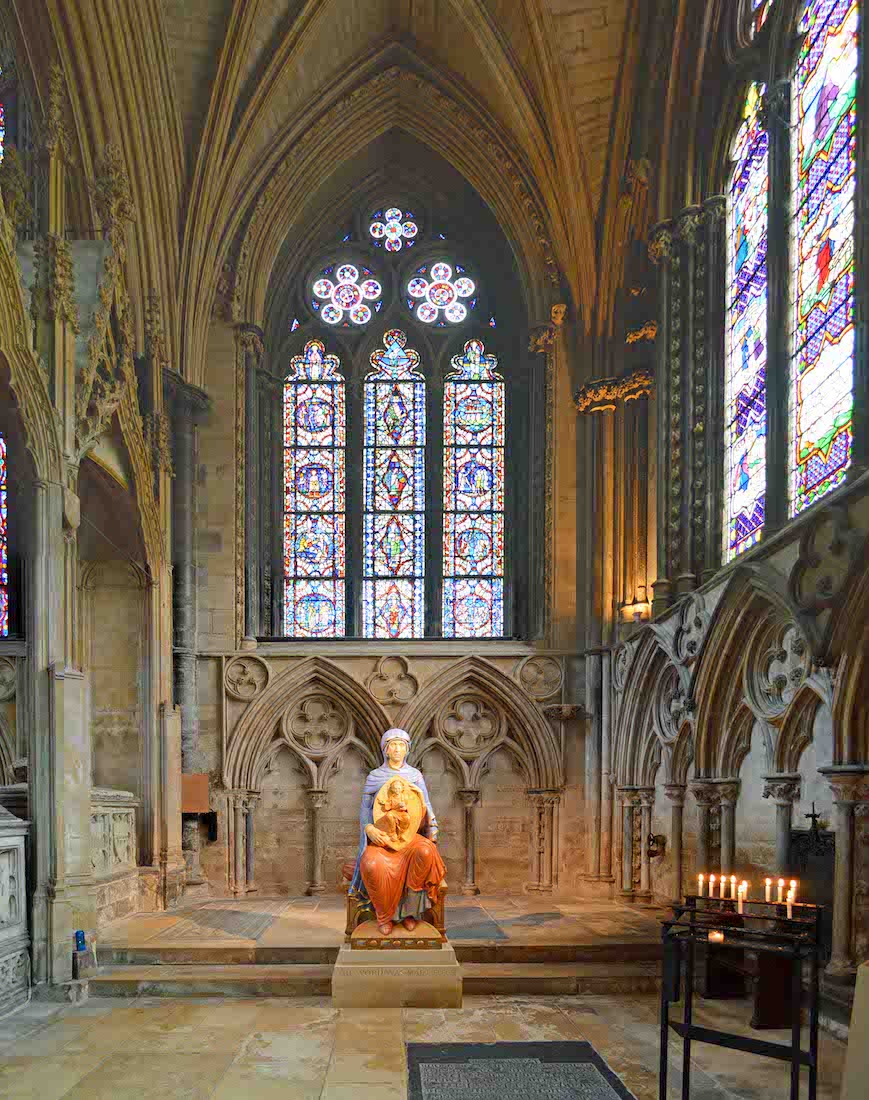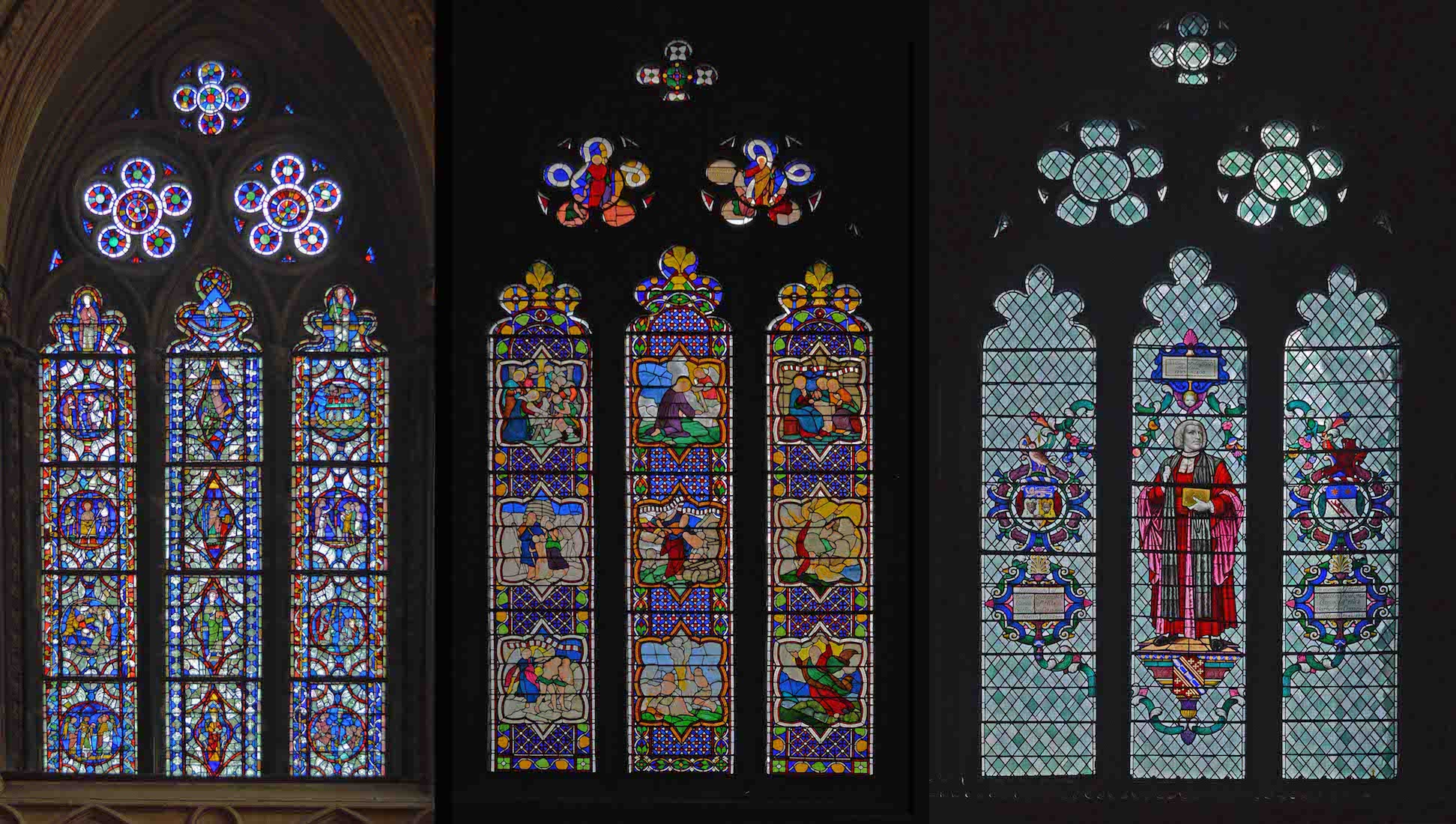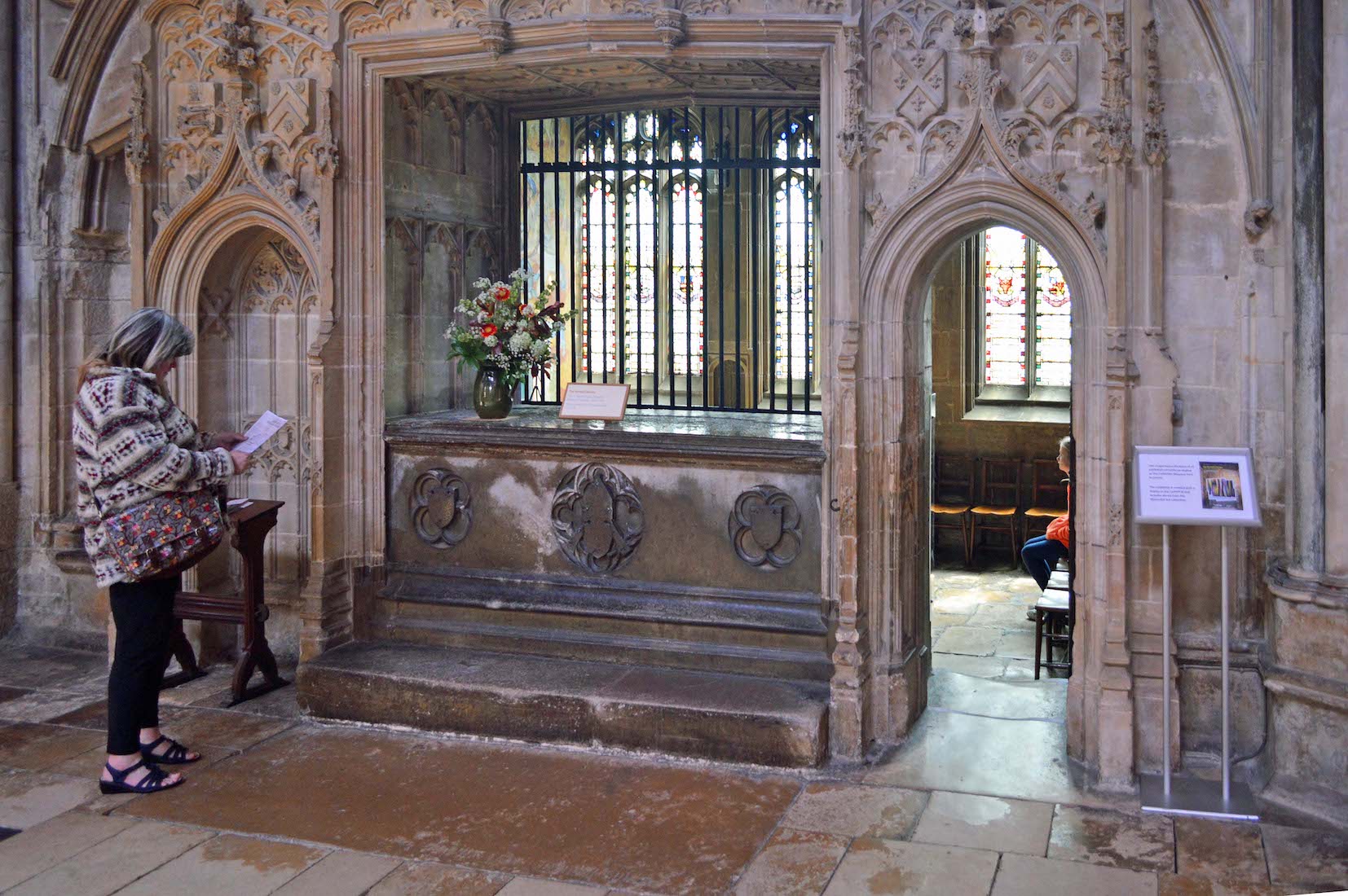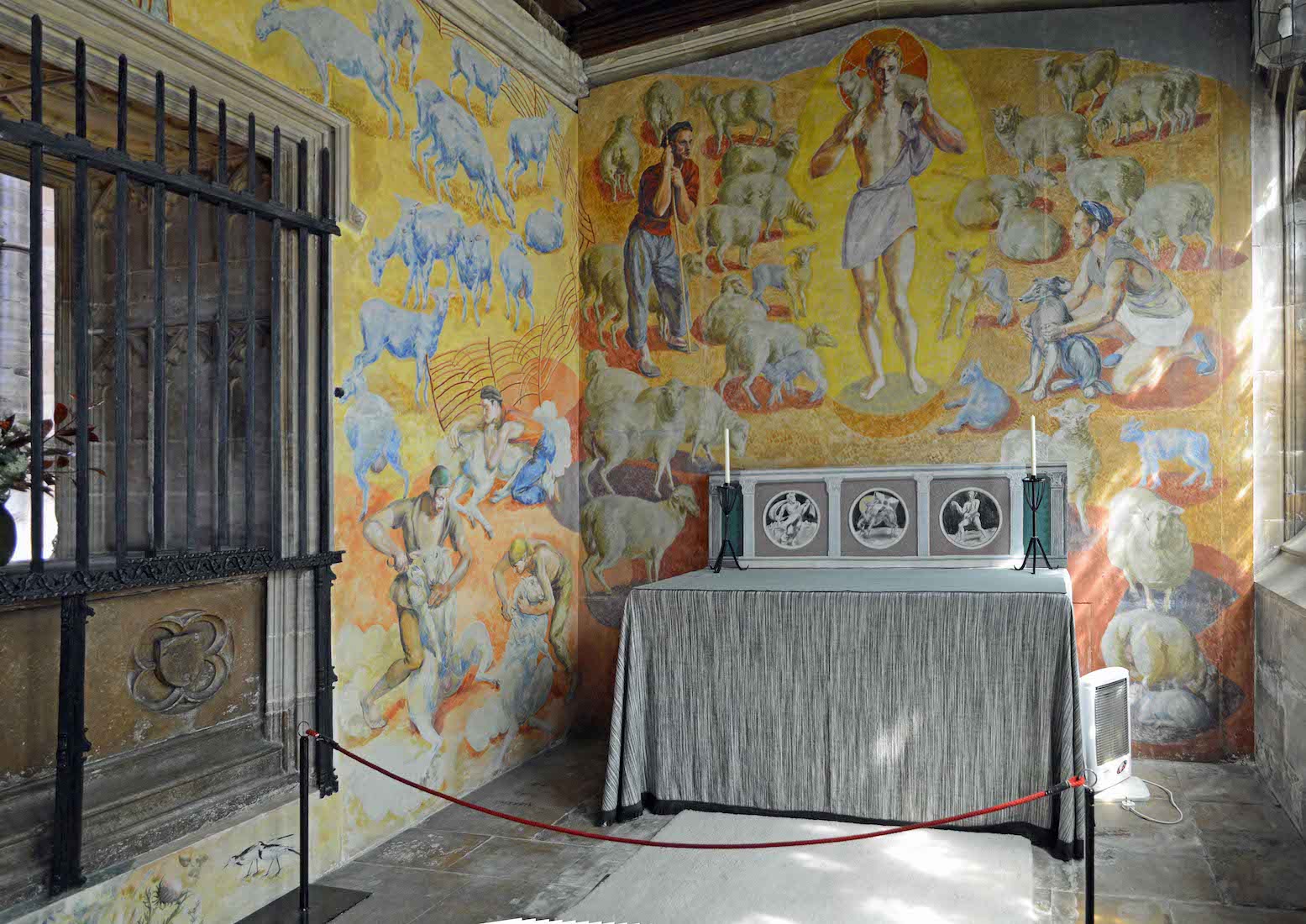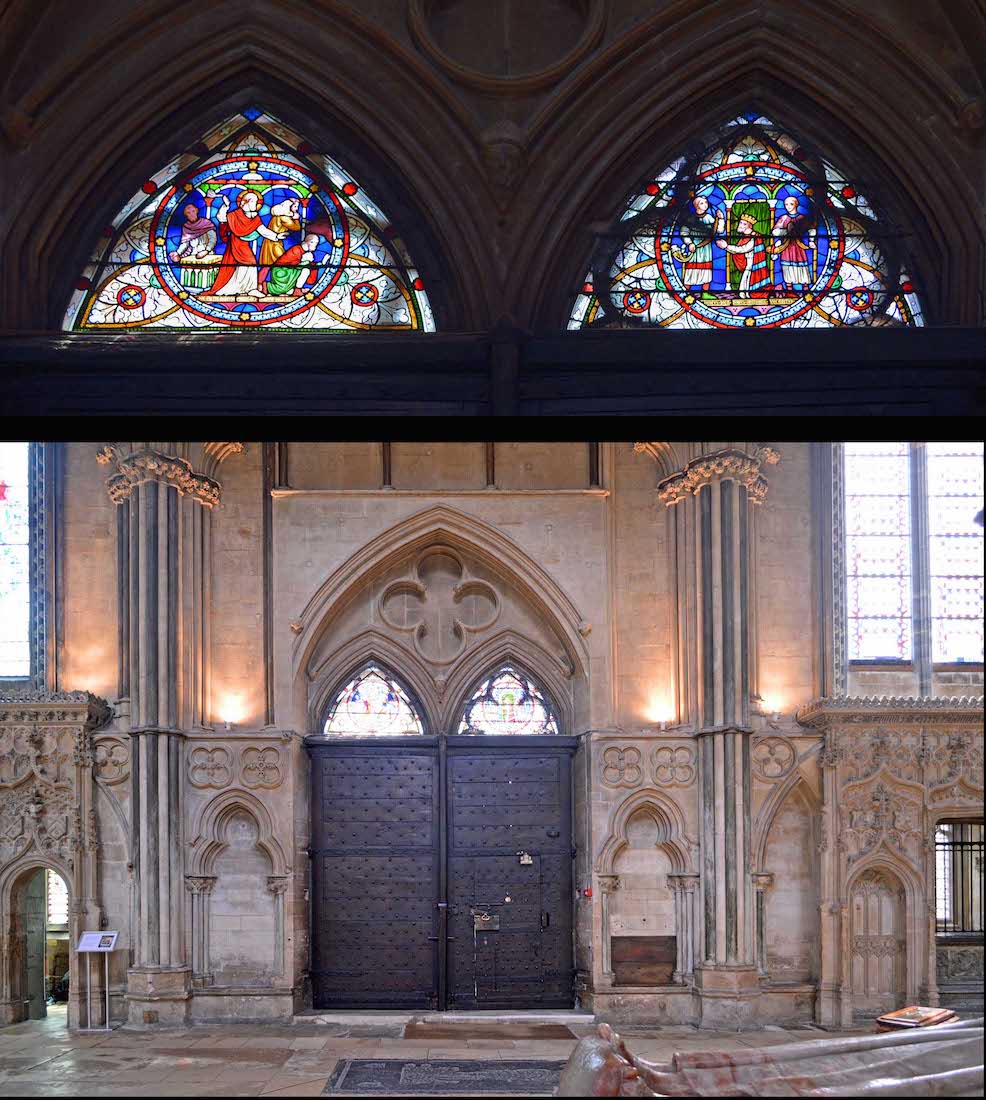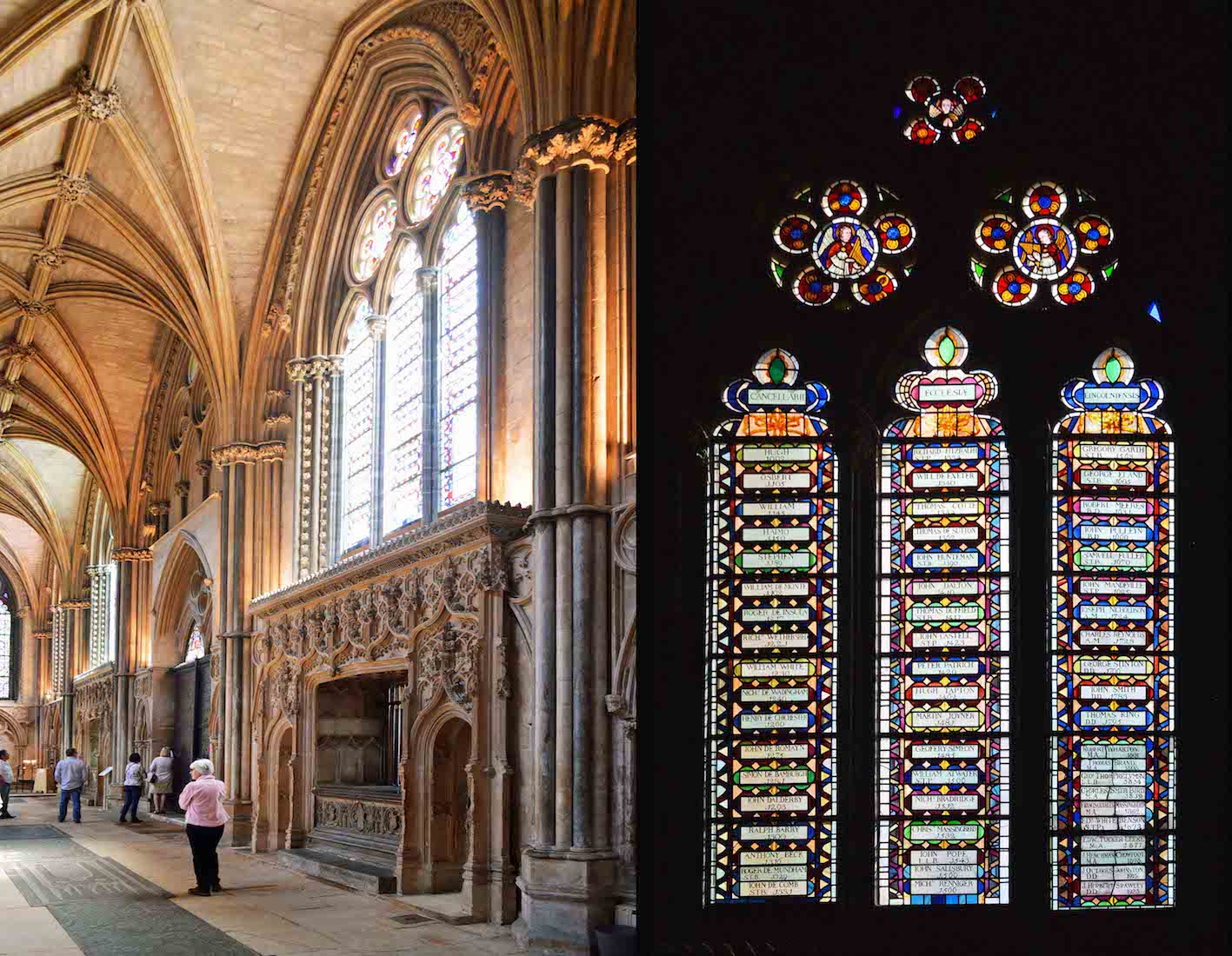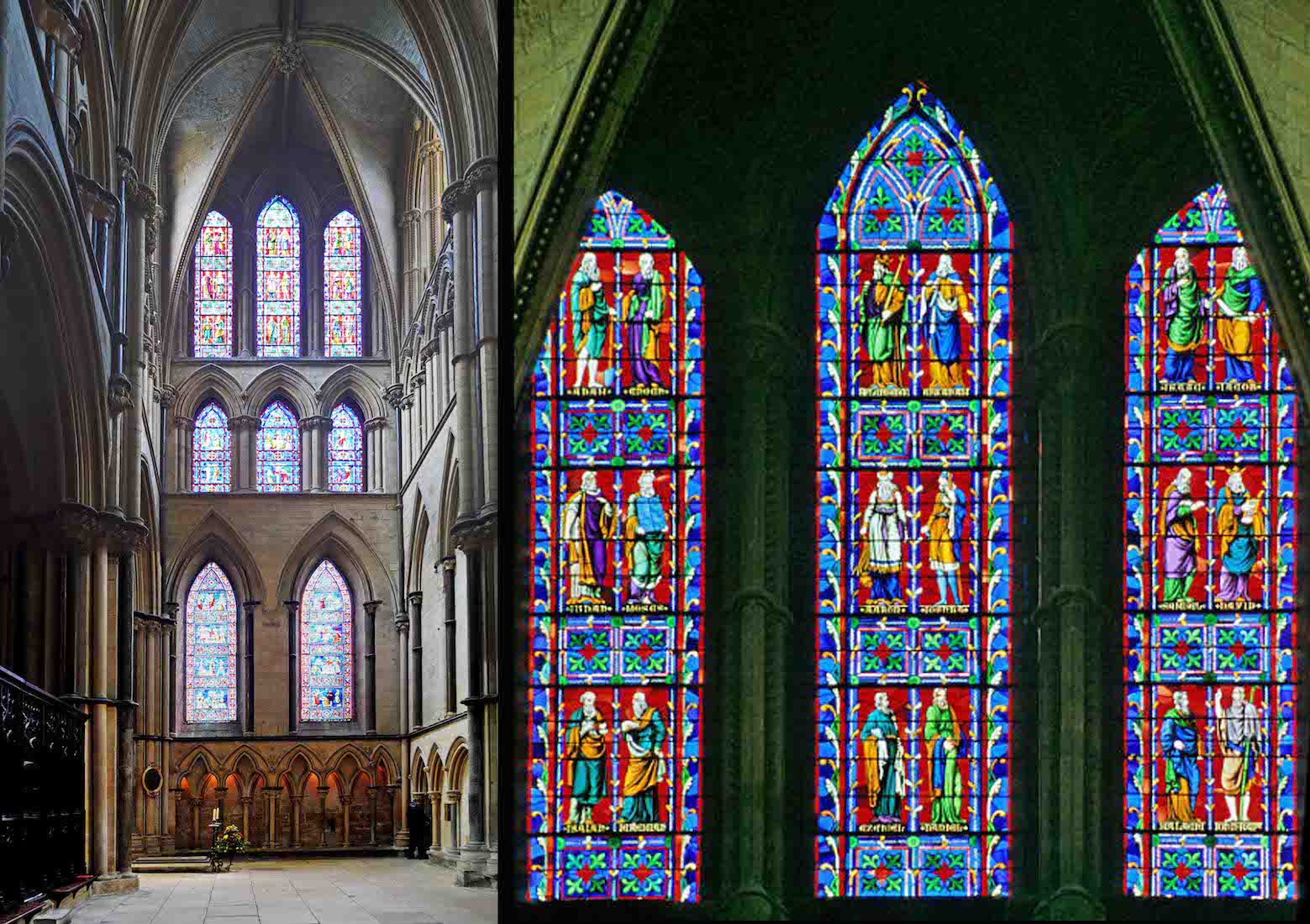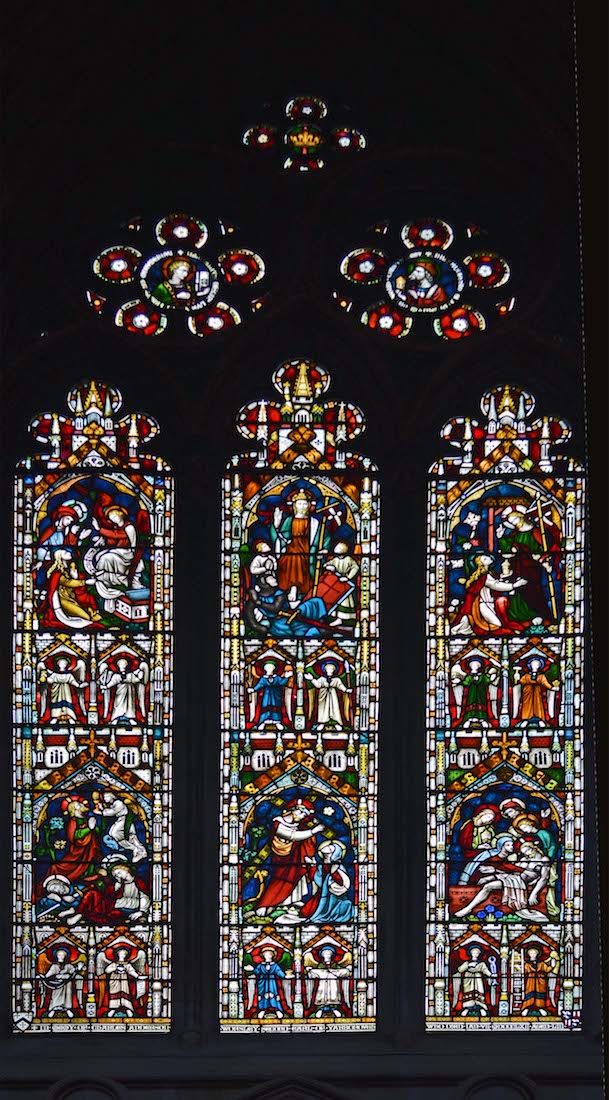
This window on our left has three main scenes. Across the bottom are, from left, Jesus praying in the garden of Gethsemane, Jesus carrying the cross with Mary, and Mary with the body of Jesus after his death on the cross. PLAN
82. ICON
![]()
Further along on our left is a framed silk icon. It is entitled, ‘The head that once was crowned with thorns is crowned with glory now’. Below are a couple of figures huddled together with the text: ‘Go and do thou likewise’.
83. BISHOP’S TOMB
As we reach the end of the North aisle, on our right is this very ornate island tomb. The effigy is of a reclining bishop in prayer. Guardian angels keep watch. Surely the identity of this bishop must be known, but I have been unable to find it.
84. NORTH EAST CORNER
In this corner of the Cathedral, there are three stained-glass windows. At our left is another bishop’s tomb, on the floor are various tombstones, and ahead on a raised platform a strange array of pots.
85. BISHOP FLEMING’S TOMB
The tomb is that of Bishop Richard Fleming. It is an example of a cadaver tomb featuring (below) an effigy in the form of a decomposing corpse, a reminder of man's mortality. Above is the body of a bishop with his feet on a dragon (conquering evil) and angels at his head. Such tombs were particularly characteristic of the later Middle Ages. This is the earliest surviving one in England. Bishop Richard Fleming founded Lincoln College, Oxford, and died in 1431.
86. GILBERT POTS
In this Chapel of St Katherine, the tall pots holding candles are named after the C12th Lincolnshire Monk, Gilbert of Sempringham.. Gilbert founded the Gilbertine Order, the only medieval English monastic order. This is an area of remembrance and prayer.
87. CORNER WINDOWS
These three windows are quite different in character. The left window shows a king,several bishops, and a building program, and requires some explanation! The central window depicts scenes from the lives of various Old Testament prophets including Samuel, Elijah and Elisha. The right window also shows a number of scenes, but is made up of pieces of broken glass, and is not easy to decipher.
88. ANGEL CHOIR
The space at the East end of the Cathedral is called the angel choir. It was originally created as a link between the North and South choir aisles. Prominent here is the great East window, below which is a famous tomb and an altar. Also of interest is the sculpted foliage at the top of the black pillar at left. It is here that we will find the famous Lincoln imp. According to 14th-century legend, two mischievous imps were sent by Satan to do evil work on Earth. After causing mayhem elsewhere in Northern England the two imps headed to Lincoln Cathedral, where they smashed tables and chairs and tripped up the Bishop. ...
89. LINCOLN IMP AND ST HUGH’S SHRINE
... An angel appeared in the angel choir and ordered them to stop. One of the imps sat atop a stone pillar and started throwing rocks at the angel. The angel turned the imp to stone, and he can still be found sitting atop his stone column in the angel choir. • This shrine of St Hugh used to have a jewelled casket on top of it containing his head. People thought that the remains of saints could work miracles curing illnesses or saving souls. They wanted to get as close as possible. So many pilgrims have knelt to pray here that they have worn a deep groove in the stone.
90. GREAT EAST WINDOW
The East window of Lincoln Cathedral is huge; the largest 13th century window in the world. The glass is Victorian; the window was re-glazed in 1855. This incredible window shows 64 scenes in an 8 x 8 grid. Exactly 28 of these scenes have a circular frame: these form a cross, and show scenes from the life of Jesus taken from the New Testament. The other shapes contain scenes from the Old Testament.
91. ELEANOR OF CASTILE
On the South side of the East window is another tomb and effigy. Eleanor of Castile (c 1240 - 1290) was the Queen Consort of the most powerful Plantagenet King Edward 1 of England (‘Longshanks’) (1239 - 1307). Eleanor’s tomb is in Westminster Abbey. Two bronze effigies were made - one for Westminster (body less heart) and one for Lincoln Cathedral (entrails, called a visceral tomb). The original Lincoln bronze and tomb have gone, but have been replaced with good copies. The tomb for Eleanor’s heart was in Blackfriars but no longer exists.
92. SOUTHEAST CORNER
We cross to the Southeast corner of the angel choir with its stained glass windows, corner chapel and nearby chantry. We look first at the side chapel.
93. LADY CHAPEL
The main feature of the Lady Chapel is the modern and colourful sculpture called Our Lady of Lincoln. It was completed in May 2014, and is carved from a single block of Great Ponton limestone. The statue is about 2.3 metres (7′-6″) high. The Cathedral is dedicated to the Blessed Virgin Mary and in medieval times was the second largest centre of pilgrimage in all England, after Walsingham. The focus of veneration seems to have been a statue of the Virgin and Child, until this was destroyed in the iconoclastic ravages of either Henry VIII or of Reformers in the 1640s under Oliver Cromwell.
94. SOUTHEAST WINDOWS
These three windows in the south-east corner are quite different in style. The Eastern window is made of small pieces of glass and quite difficult to interpret. The central window is on the South wall, and the faces of the figures are quite obscure. Scenes depicted here include the garden of Eden and Moses on Mount Sinai. The window at right is in memory of Hubert Larkin, William Paley and Arthur Malcolm Cook, who were canons and sub deans of the cathedral. Payley is famous for his works on the philosophy of religion, and it may be he who is pictured.
95. BISHOP RUSSELL’S CHANTRY
The Russell Chantry contains the tomb of Bishop John Russell who died in 1494. He was an English Bishop of Rochester, Bishop of Lincoln, and Lord Chancellor. Sir Thomas More called Russell ‘a wise manne and a good, and of much experience, and one of the best-learned men, undoubtedly, that England had in hys time.’
96. CHANTRY MURALS
The walls of the chantry are covered by murals by Duncan Grant. Grant (1885-1978) from Scottish aristocratic roots, was an influential artist of the early 20th century, conscientious objector in the First World War and member of the Bloomsbury Group, whose attitudes towards feminism, pacifism and sexuality brought them great notoriety. He was homosexual, and had several notable lovers including Bloomsbury set fellows, the economist John Maynard Keynes and writer David Garnett. His later life was spent with another Bloomsbury associate, poet and translator of the classics, Paul Roche.
97. ANGEL CHOIR SOUTH DOORS
Next to the chantry are the angel choir South doors. As we have seen form the exterior, these doors lead to the outside. The left high-light shows Christ cleansing the temple.
98. ALONG THE SOUTH CHOIR AISLE
We continue our walk back along the South choir aisle. The window above us appears to be a memorial window. Names are in three lists headed Cancellarii, Ecclesiae and Lincolniensis.
99. BISHOP LONGLAND’S CHANTRY
On the West side of the angel choir South doors we come to Bishop Longland’s chantry. Inside is a simple altar with a rough hewn cross and a comfortable lounge chair on either side. There is also an icon with five figures seated around a table.
100. SOUTHEAST TRANSEPT
We come to the Southeast transept, with its fine display of windows. St Peter's Chapel opens off from the left-hand side.



